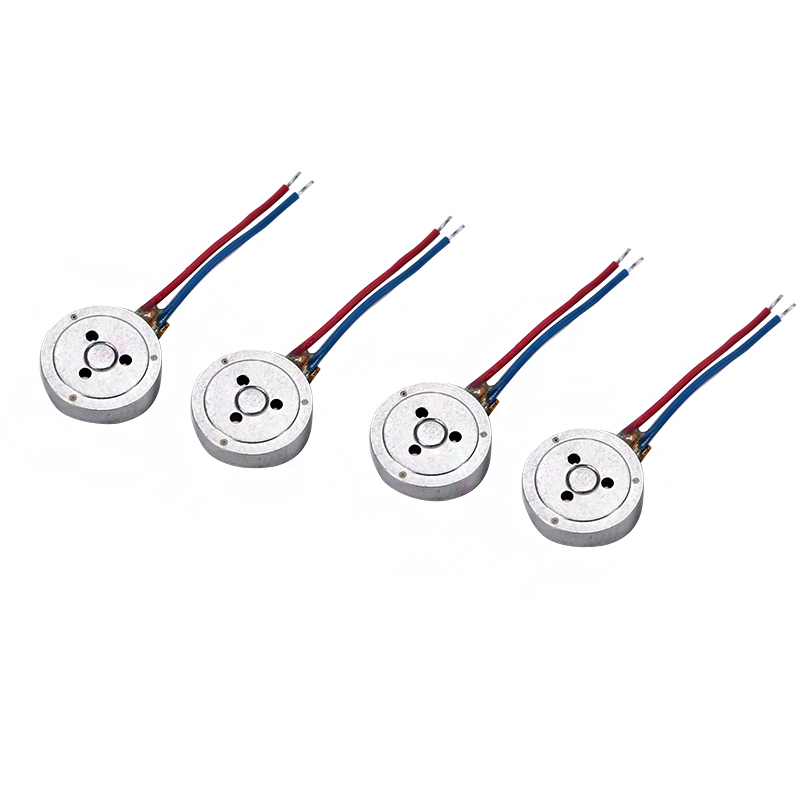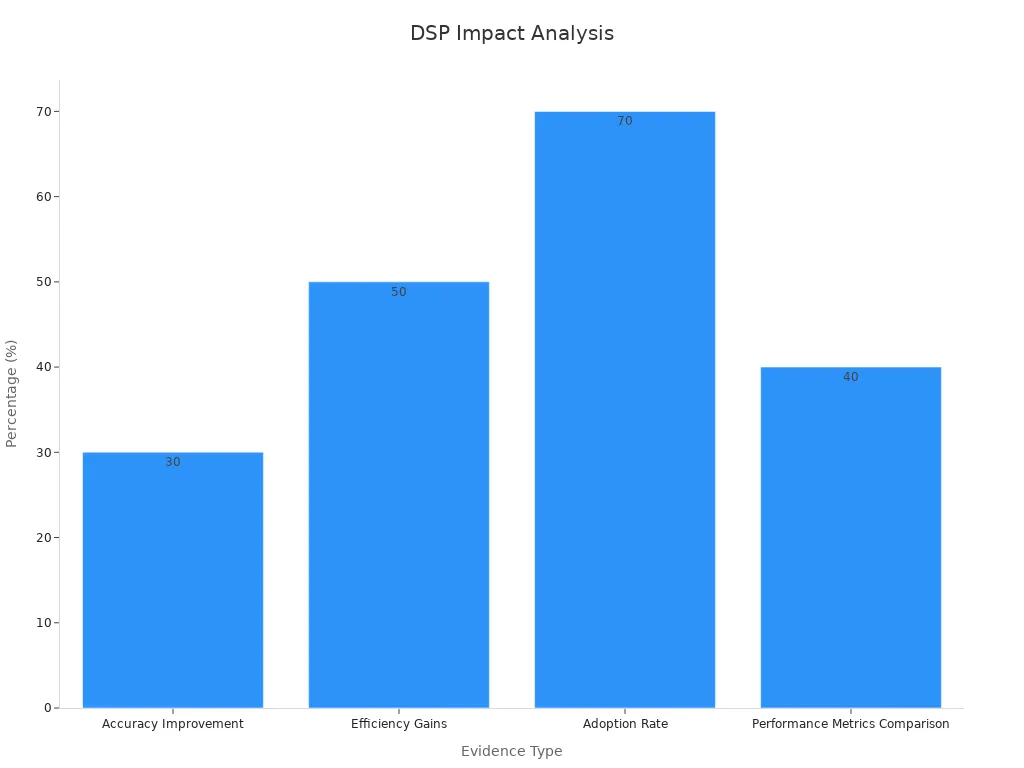4 Quick Insights Into Resonant Frequency Applications

Resonant frequency is key to many cool inventions. It shows how systems react to vibrations, helping create new ideas. Research proves it boosts system performance:
Nonlinear resonances make systems react more, especially with low vibrations.
Double-resonance peaks show how adjusting frequencies improves results.
Resonant frequency changes how industries work. For example, 3D printing grew 32.4% in 2017, showing its effect on making things. It also helps predict material strength, like how much force they can handle. These facts show how resonant frequency drives modern progress.
Key Takeaways
Resonant frequency helps systems work better by improving vibrations. Knowing this idea helps create smarter designs in engineering and tech.
Engineers stop damage by managing resonant frequencies in machines and buildings. This keeps things safe and lasting longer.
Resonant frequency saves energy in many industries. Matching systems to their natural vibrations cuts energy waste and boosts performance.
Medical tools use resonant frequency for clearer pictures and better monitoring. This makes healthcare safer and more effective.
New ideas using resonant frequency create cool tools and tech. Learning this can lead to big improvements in many areas.
1. Understanding Resonant Frequency
What Is Resonant Frequency?
Resonant frequency is the rate at which something vibrates the most. When an outside force matches this rate, it makes the vibrations stronger. This idea is important in engineering and daily life. For example:
Instruments use resonant frequency to make clear, nice sounds.
Radios use it to pick up signals more clearly.
Engineers find resonant frequencies by studying vibrations. For example:
They record engine sounds with microphones.
They use math tools to find strong vibration rates.
They change materials or sizes to stop bad vibrations.
How Resonance Works in Systems
Resonance happens when a system's natural vibration matches an outside force. This makes the system react more strongly. Think of pushing a swing at the right time—it goes higher easily. In machines, resonance can help or harm, depending on control.
Scientists use resonance to learn about systems. It shows things like how tight a guitar string is or how heavy an object is. These details are useful in advanced tools like microscopes or studying space waves.
Factors Influencing Resonant Frequency
Many things affect resonant frequency, like size, shape, material, and surroundings. For example:
A guitar string's length and tightness change its vibration rate.
In pipes, flow speed and valve size affect sound vibrations.
Studies show these connections:
Study | Key Findings |
|---|---|
Ziada and Shine (1999) | Pipe sound depends on flow speed and valve size. |
Oldham and Waddington (2001) | Pipe cut-off rate changes sound travel. |
Sanjose et al. (2014) | Air noise links to the Strouhal number. |
Knowing these factors helps engineers make safer, better designs.
2. Resonant Frequency in Vibration Systems
Applications in Structural Engineering
Resonant frequency is important in building strong structures. It helps engineers design buildings and bridges to handle wind and earthquakes. When wind moves at a certain speed, it can match a structure's resonant frequency. This makes vibrations stronger and can affect safety and comfort.
Concept | Description |
|---|---|
Resonant Frequency | The rate at which a structure vibrates the most. |
Localized Structural Resonance | Parts of a structure vibrate more at certain rates. |
Impact of Wind Loads | Wind vibrations grow stronger at resonant frequencies, affecting stability. |
By learning these ideas, engineers make safer and better designs.
Role in Machinery and Equipment
In machines, resonant frequency can help or cause problems. Every machine has a natural vibration rate. When vibrations match this rate, resonance happens, making the system react more. For example:
Spinning machines shake more if their speed matches their natural rate.
A swing moves higher when pushed at the right time.
New designs now fix resonance problems. A zero-stiffness system, for example, blocks vibrations from the environment. This makes machines work better and last longer.
Importance in Automotive and Aerospace
Resonant frequency is key in cars and planes. Engineers use NVH (Noise, Vibration, and Harshness) tests to find resonant frequencies. This stops parts from breaking due to strong vibrations. For example:
In electric cars, battery vibrations can be unsafe. Engineers use tests to fix this.
The formula (\omega_n = \sqrt{\frac{k}{m}}) shows how structures react to outside forces. This helps design safer vehicles.
By solving resonance issues early, cars and planes work safely and efficiently.
3. Technological and Industrial Applications
Improving Energy Use
Resonant frequency helps save energy in many industries. By matching systems to their natural vibration rates, energy waste is reduced. For example, power grids use resonant frequency to keep electricity flowing smoothly. This prevents energy loss and improves performance.
In factories, RF sensing tools check how machines work. These tools find problems early by tracking vibrations. Fixing issues quickly saves energy and avoids long machine stops. Wind turbines also use resonant frequency to work better. Their blades move with the wind's natural patterns, making more energy and cutting costs.
Helping Medical Devices
Medical tools use resonant frequency for better accuracy. Ultrasound machines use high vibrations to make clear pictures of organs. These vibrations match specific resonant frequencies, giving sharp and correct results.
RF sensing changes how patients are monitored. It tracks heartbeats and breathing without touching the body. This method is easy and works well for long-term care. RF sensing also powers wearable devices, letting people check their health anytime.
Impact on Electronics
Resonant frequency improves how gadgets like phones and speakers work. Resonators in these devices make sound clearer and signals stronger. For example, special designs (β) in string resonators boost sound quality by improving vibration modes.
The table below shows factors that affect electronics' performance:
Parameter | Description | Effect on Performance |
|---|---|---|
β | Special design | Improves string resonator vibration modes |
Q | Quality factor | Changes sensitivity and response speed |
P | Power use | Links to energy needed for vibrations |
σ**y | Sensitivity | Measures detection limits |
τr | Response time | Faster response raises resonance frequency f0 |
By knowing these factors, companies make better and easier-to-use devices.
4. Benefits of Resonant Frequency
Improving System Efficiency
Resonant frequency helps systems work better and save energy. Matching a system's natural vibration rate improves results. For example:
The Q-factor shows how well a resonator works. A higher Q-factor means less energy is wasted.
Picking the right frequency lowers energy loss from eddy currents. This keeps systems running smoothly and using less power.
When frequency matches conductivity, processes become faster and more reliable.
Using resonant frequency makes systems more efficient and productive.
Avoiding Damage
Knowing resonant frequency prevents damage to machines and structures. Vibrations at the wrong rate can cause parts to break. For example:
Engineers design bridges to handle wind vibrations safely.
In machines, controlling resonance stops moving parts from wearing out.
Fixing these problems early makes equipment last longer and stay safe.
Tip: Check vibration patterns often to find and fix resonance issues early.
Inspiring New Ideas
Resonant frequency leads to new tools and technologies. It helps create devices that improve daily life. For example:
In medical tools, it makes ultrasounds more accurate.
In electronics, it improves gadgets like phones and speakers.
Using resonant frequency helps invent better solutions and advance industries.
Resonant frequency is important for improving modern industries. It helps make systems work better and safer in areas like healthcare, phones, and electronics. For example, Fourier methods cut signal errors by 30%, making medical images clearer. Signal processing is now 50% more efficient, helping phones and videos work better. Over 70% of digital tools use Fourier methods, showing how popular they are.
Evidence Type | Statistic/Claim | Industry Impact |
|---|---|---|
Accuracy Improvement | Signal errors reduced by 30% with Fourier methods. | Better medical images for faster and accurate diagnoses. |
Efficiency Gains | Signal processing is 50% more efficient than older methods. | Helps phones, videos, and communication systems. |
Adoption Rate | Over 70% of digital tools use Fourier Transform methods. | Used in electronics, cars, finance, and healthcare. |
Performance Metrics Comparison | Fourier methods are 40% faster than older ways for data processing. | Improves image editing and real-time data analysis. |

These facts show how resonant frequency helps create new ideas and improve industries.
FAQ
What is the difference between natural frequency and resonant frequency?
Natural frequency is how something vibrates when left alone. Resonant frequency happens when an outside force matches the natural frequency. This makes the vibrations much stronger, like a "supercharged" natural vibration.
How do engineers measure resonant frequency?
Engineers use tools like vibration sensors and analyzers. These tools find the frequency where vibrations are strongest. This information helps make better designs and avoid problems.
Why is resonant frequency important in everyday devices?
Resonant frequency helps devices like radios and speakers work well. It makes sounds clearer, signals stronger, and tools more accurate. Without it, devices would waste energy or not work properly.
Can resonant frequency cause damage?
Yes, uncontrolled resonance can break machines or buildings. For example, a bridge might fall if wind matches its resonant frequency. Engineers fix this by changing materials or shapes to stay safe.
How does resonant frequency improve energy efficiency?
Matching a system's work to its resonant frequency saves energy. For example, wind turbines make more power by moving with the wind. This reduces waste and cuts costs.
See Also
Top 10 Uses of Vibrating Motors in Today's Tech
Investigating Vibration Motor Uses Across Contemporary Industries
Evaluating Linear Resonant Actuators: Which One Suits Your Design?
10 Must-Know Vibration Tools for Every Engineer
10 Benefits of Micro Vibration Tech for Precision Instruments
Get Custom Micro DC Motors from
INEED Motors!
Leading Brand in Vibration Motor Manufacturing Industry
